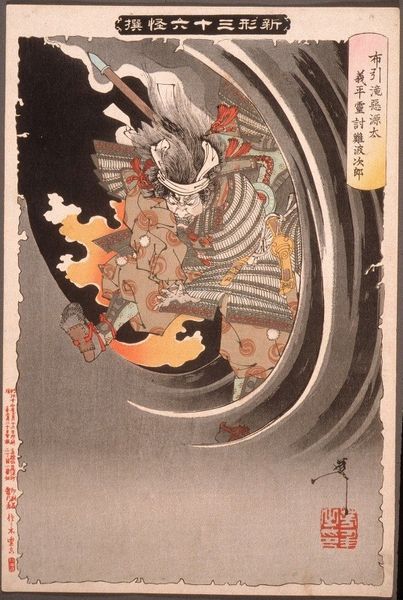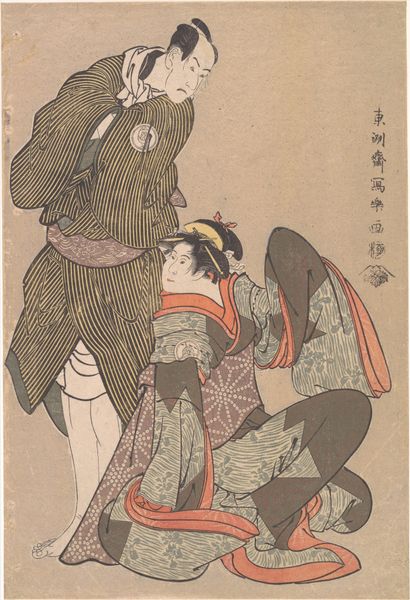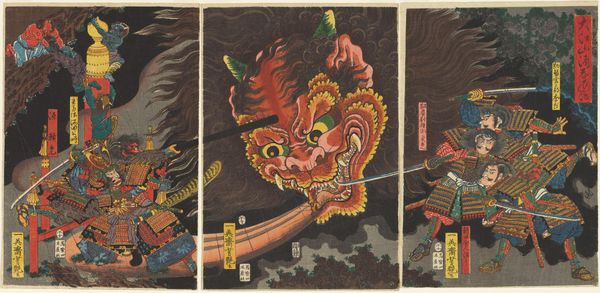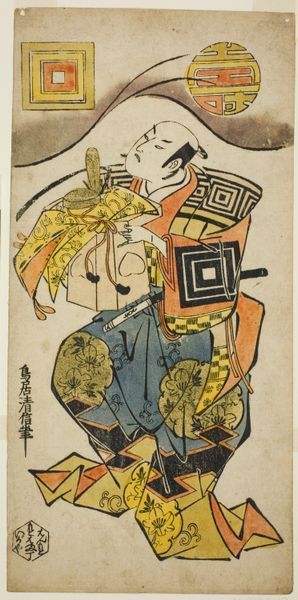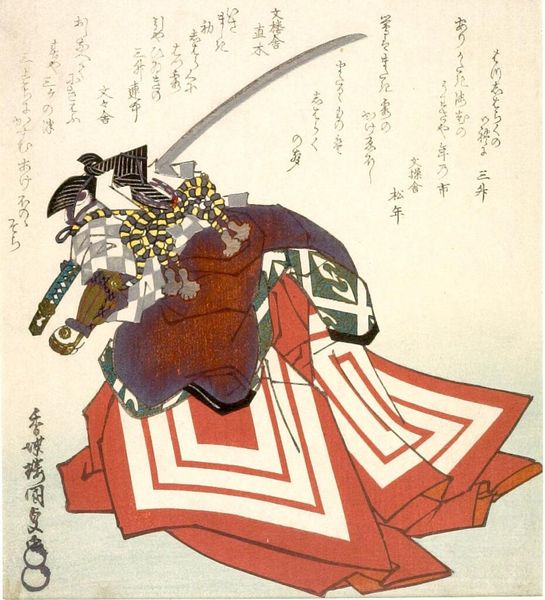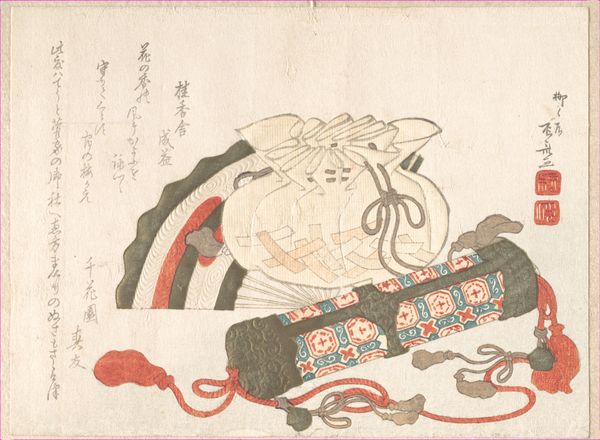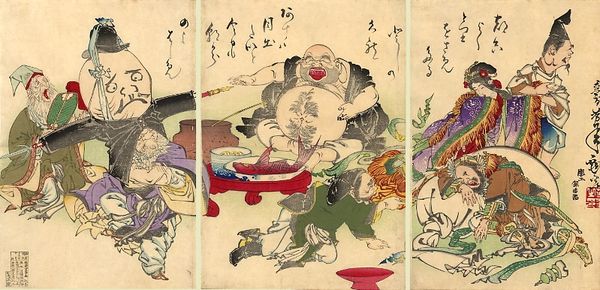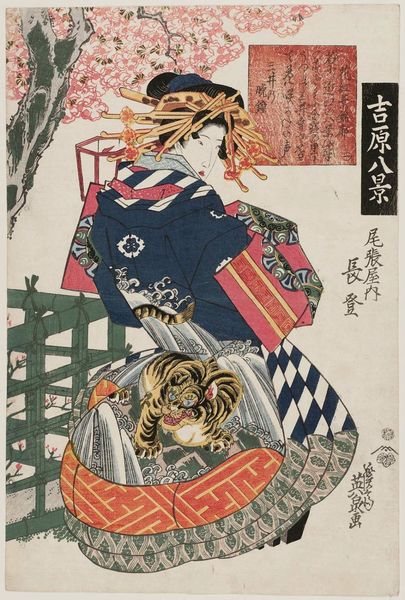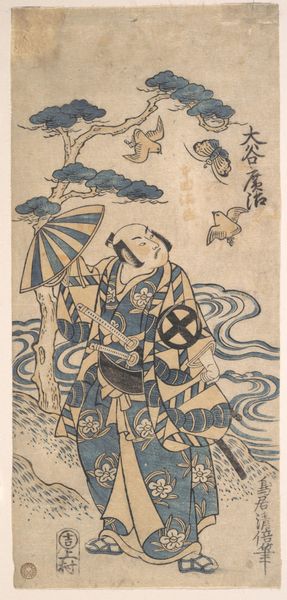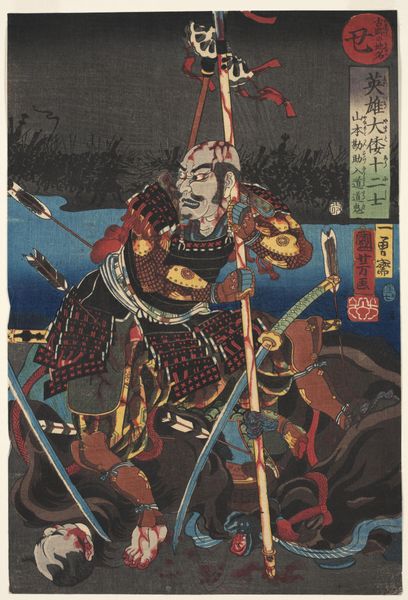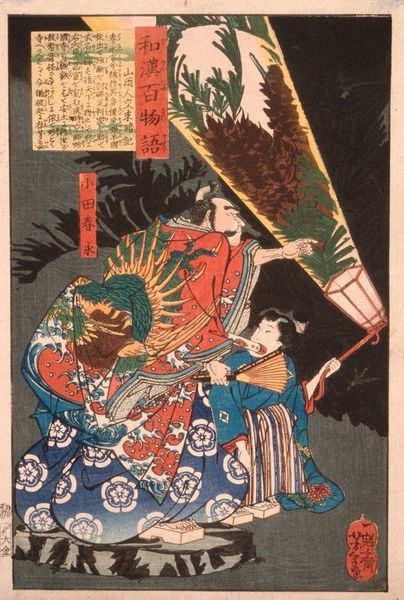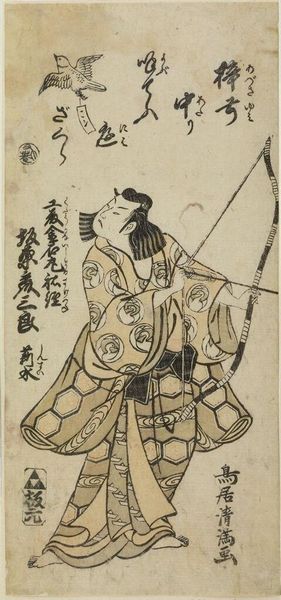
Copyright: Public Domain: Artvee
Curator: Looking at Tsukioka Yoshitoshi's 1882 woodblock print, *Shōki Creeping Up on a Sleeping Demon*, I'm struck by how this ukiyo-e piece engages with cultural narratives of protection and malevolence. Editor: What I find arresting is how dramatically the artist captured the moment just before action, a still silence before what I imagine is to be an impactful strike against an obviously weakened demon. Curator: Exactly! Shōki, a figure drawn from Chinese mythology and often associated with warding off evil spirits, here embodies the potent role of a guardian in Japanese visual culture. His very posture is tense and loaded. Editor: I immediately read the sleeping demon as symbolizing suppressed anxieties or inner turmoil. Its position inside the giant fish form really creates a surreal and almost claustrophobic feel to those darker emotions. Does that fish have symbolic meaning beyond just being somewhere to hide? Curator: It does indeed. While demons are, generally speaking, embodiments of disruption, their subjugation reflects the sociopolitical structures in place during the Meiji Era. Yoshitoshi repurposes the figure, which then gives license to the new social order, the image of Shōki now patrolling the borders between order and chaos, thus reinforcing prevailing norms. Editor: Thinking of that, it also carries weight in that time because ukiyo-e had to reinvent itself during the Meiji era because of photojournalism; seeing narrative re-enter here is compelling because its trying so desperately to matter still. Curator: Your insight's particularly astute, recognizing its narrative power as part of ukiyo-e’s evolution. I hadn't thought of it so deeply within its transitional place. Editor: These are powerful representations and a good synthesis, offering not only a story, but a visual shorthand that represents deeper, almost hidden truths within the individual and greater society. Curator: Well, examining these interplays has truly underscored its capacity to be more than mere representation but actually act as a site for processing complex anxieties within Meiji society.
Comments
No comments
Be the first to comment and join the conversation on the ultimate creative platform.
